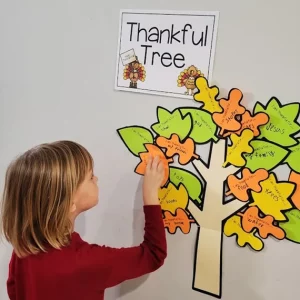Introduction Practicing gratitude means taking time to appreciate the good things in life. It can make you feel happier and more positive. But sometimes, it can be hard to keep up with gratitude every day. This article will show you simple ways to stay motivated to practice gratitude regularly. We will explain what gratitude is,
Introduction
Practicing gratitude means taking time to appreciate the good things in life. It can make you feel happier and more positive. But sometimes, it can be hard to keep up with gratitude every day. This article will show you simple ways to stay motivated to practice gratitude regularly. We will explain what gratitude is, why it is important, and how you can make it a fun habit. You will learn smart mindfulness tips and creative ways to use a gratitude journal. This guide is easy to read, even for kids, and will help you build a daily routine that brings joy and positivity.
What Is Gratitude?

Image by: Yandex.com
Gratitude is a way to notice and appreciate the good in your life. It can be as simple as being thankful for a sunny day, a tasty meal, or a kind friend. When you practice gratitude, you focus on what makes you happy. This habit helps you see the bright side of life, even when things are tough. A gratitude journal is one tool you can use to write down your thanks every day.
Gratitude is not just about saying “thank you.” It is about feeling a deep sense of appreciation for all the little moments. This practice can improve your mood and reduce stress. When you look for things to be grateful for, you start to notice more beauty around you. This is a key part of building a mindfulness practice that can help you feel calm and joyful.
Why Practicing Gratitude Matters

Image by: Yandex.com
Practicing gratitude has many benefits. It makes you happier and more positive. When you are thankful, you feel less stressed and more relaxed. Gratitude helps you build stronger relationships because you appreciate the people around you. It also boosts your self-esteem and helps you deal with challenges better. By practicing gratitude regularly, you can create a more fulfilling life. When you take time to reflect on your blessings, you start to build a strong, positive mindset that helps you face daily challenges with courage and hope.
Regular gratitude practice can change the way you see the world. Instead of focusing on what you lack, you learn to see what you have. This shift in perspective is powerful. It can turn ordinary days into moments of wonder and joy. Whether you use a gratitude journal or simply take a moment each day to think of your blessings, practicing gratitude is a gift you give yourself.
The Benefits of Regular Gratitude Practice
Regular gratitude practice has many positive effects on your life. It makes you feel happier, reduces stress, and improves your relationships. When you are grateful, you focus on the good things and build a positive mindset. This can help you overcome challenges and enjoy life more fully. Gratitude can also improve your physical health. Studies show that people who practice gratitude have better sleep, lower blood pressure, and a stronger immune system. By staying motivated to practice gratitude, you set the foundation for a healthy, happy life.
When gratitude becomes a regular habit, it changes how you view the world. You learn to appreciate even the small joys in life. This shift in perspective can lead to lasting happiness and success. Whether you are young or old, practicing gratitude is a simple yet powerful way to improve your well-being.
How to Stay Motivated to Practice Gratitude

Image by: Yandex.com
Staying motivated to practice gratitude every day can be challenging. The key is to make it a fun and simple habit. First, set a small goal. Write down three things you are grateful for every day. This simple step makes it easy to start and continue your practice. Use a gratitude journal to keep track of your thoughts. Writing your thanks in a journal helps you remember all the good things in your life.
Another tip is to share your gratitude with others. Talk to your family and friends about what you are thankful for. Sharing positive thoughts can create a ripple effect of kindness. You can also use fun apps or creative crafts to celebrate gratitude. For example, you might create a gratitude jar where you drop notes about things you appreciate. These small actions help build a positive routine that makes it easier to stay motivated.
Simple Tips to Practice Gratitude Daily

Image by: Yandex.com
Here are some simple tips to help you practice gratitude every day:
- Start your day with a gratitude thought. When you wake up, think of one thing you are thankful for. This sets a positive tone for the day.
- Use a gratitude journal. Write down at least three things you appreciate before going to sleep. Over time, your journal becomes a treasure trove of happy memories.
- Create a gratitude jar. Write your thankful thoughts on small pieces of paper and collect them in a jar. When you feel down, read a few notes to remind yourself of the good things in life.
- Take a moment to thank someone. A kind word or a small thank-you can brighten someone’s day and yours as well.
- Practice mindfulness. Spend a few minutes each day meditating or simply sitting quietly. Focus on your breathing and let gratitude fill your mind.
These tips make practicing gratitude fun and easy. They can become a part of your daily routine and help you build a happier, more positive life.
How to Make Gratitude Fun for Kids

Image by: Yandex.com
Kids can also benefit from practicing gratitude. Make it fun by turning it into a game or a creative activity. For example, you can create a “thankful tree” where each leaf represents something you are grateful for. Use colorful paper and stickers to decorate your tree. Another idea is to draw pictures of things you appreciate. This makes gratitude a playful and engaging habit.
Encourage children to share their thoughts at dinner or during family time. Ask them to name one thing they are grateful for each day. This simple practice can help kids develop a positive outlook and build strong emotional health. By making gratitude fun, you teach children an important life skill that will benefit them for years to come.
How to Overcome Challenges in Gratitude Practice
Sometimes, it can be hard to feel grateful. Bad days and challenges can make you forget the good things in life. When this happens, try to remember that gratitude is a practice that takes time. If you feel down, look back at your gratitude journal or read the notes in your gratitude jar. These reminders can lift your spirits and help you see the silver lining.
Another challenge is being too busy. When you have many tasks, you might forget to pause and reflect. To overcome this, set a daily alarm as a reminder to take a moment for gratitude. Even one minute of reflection can make a big difference. Remember that small, consistent actions build lasting habits.
By overcoming these challenges, you strengthen your ability to practice gratitude. Each time you push through a tough day, you grow more resilient and thankful. This is an important part of building a positive mindset and a happier life.
The Future of Gratitude Practices

Image by: Yandex.com
Gratitude practices are likely to become even more common in the future. As more research highlights the benefits of gratitude, schools, businesses, and wellness programs will continue to promote it. Many workplaces are already introducing gratitude exercises to improve teamwork and employee happiness. Schools are also teaching children about gratitude from a young age, helping them develop a positive mindset early in life.
Technology is also playing a role in making gratitude more accessible. Mobile apps, online journals, and virtual gratitude challenges are helping people stay consistent. Social media trends encourage people to share their gratitude journeys, which inspires others to do the same. As gratitude becomes a bigger part of mental health awareness, it will continue to grow as a daily habit for many people.
Comparative Table: Daily Gratitude Practice Tips
Below is a table that outlines key actions to help you practice gratitude daily:
| Action | What to Do | Benefit |
|---|---|---|
| Morning Reflection | Think of one thing you are grateful for when you wake up | Sets a positive tone for the day |
| Gratitude Journal | Write down three things you are thankful for each night | Builds a record of positive moments |
| Gratitude Jar | Collect small notes of thanks throughout the week | Provides a boost when you feel down |
| Thank Someone | Express your thanks to a friend or family member | Strengthens relationships and spreads positivity |
| Mindfulness Practice | Spend a few minutes meditating or focusing on your breath | Reduces stress and increases mindfulness |
This table gives you a clear guide to building a daily routine that reinforces gratitude. By following these steps, you can turn gratitude into a habit that enriches your life every day.
Conclusion
This article explained how to stay motivated to practice gratitude through daily reflection, a gratitude journal, creative activities, and mindfulness. We discussed the benefits of gratitude for emotional and physical health, and provided practical tips and a table to help build a strong routine. Embrace gratitude as a habit to enrich your life, reduce stress, and enjoy everyday moments.
Begin your journey toward lasting happiness today. Visit our website for more inspiring tips and join our supportive community focused on positivity and growth.
Call to Action
Ready to transform your life with the power of gratitude? Visit our website today for more expert mindfulness tips, creative gratitude practices, and inspirational guides to help you build a daily gratitude habit. Join our community and start your journey to a happier, more positive life now!
















